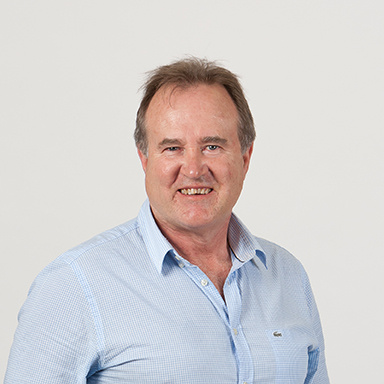The da Vinci Robotic Surgical System has revolutionised surgical options in SA, providing life-saving surgeries to patients battling cancer and other debilitating conditions.
Named after Leonardo da Vinci’s 15th-century robotic knight that moved via hidden pulleys and cables, the da Vinci Robotic Surgical System has been described as a miracle by many surgeons and patients worldwide.
For urologist Dr Gawie Bruwer from Mediclinic Durbanville, the first Mediclinic doctor to perform minimally invasive robotic surgery with the da Vinci Si HD in 2014, it’s an absolute privilege to perform life-saving surgeries with the assistance of the medical robot.
“A robotic prostatectomy – involving the partial or complete surgical removal of the prostate – is now considered the gold standard for treating prostate cancer, so it’s wonderful knowing I can offer this to our patients. In the past five years, we’ve performed about 600 surgeries on the da Vinci at Mediclinic Durbanville, for the treatment of prostate, kidney, colorectal and adrenal cancers, as well as pelvic floor relapses.”
Out of the 420 patients who he’s operated on with this cutting-edge technology, he only remembers one patient being disappointed that the operation hadn’t been easier, relates Dr Bruwer. “Every other patient has been incredibly impressed, as 91% of them are able to go home the day after their procedure and they experience less pain and bleeding.”
Most importantly, he says, very few of his patients have had cancer recurrences.
2014
For several months while juggling the demands of their busy practices, Dr Bruwer and Mediclinic Panorama urologist Dr Pierre van Vollenhoven dedicate themselves to the complex training needed for mastering Mediclinic Durbanville’s newly acquired da Vinci under the guidance of da Vinci accredited international surgeons. They give a nickname to the da Vinci: The Robot.
On 24 September, Mediclinic history is made when Thomas Mouton becomes the first patient to undergo a robotic-assisted prostatectomy at Mediclinic Durbanville, successfully performed by Dr Bruwer and Dr Van Vollenhoven.
2017
On 24 May, Mediclinic Durbanville extends its da Vinci treatment range when Dr André Naudé from Mediclinic Panorama tackles the first robotic-assisted pyeloplasty (a procedure to repair a blockage where the kidney meets the ureter, a tube that connects the kidney to the bladder). He then performs the first partial nephrectomy for kidney cancer treatment (operation to remove part of the kidney that has a tumour in it) on 7 June.
On 16 June, Mediclinic Durbanville becomes the first hospital in SA to conduct a pelvic floor relapse repair on the da Vinci, thanks to the newly acquired robotic surgery expertise of general surgeons Dr Frikkie Rademan from Mediclinic Durbanville and Dr Reniel de Beer from Mediclinic Louis Leipoldt. They then spend their weekend performing additional pelvic floor and colorectal procedures on The Robot.
2018
In February, Mediclinic Durbanville and partaking urologists extend a pro bono offering of robotic surgery to 10 public sector patients battling with prostate cancer at Tygerberg Hospital, as part of Mediclinic’s ongoing collaboration with the Western Cape Department of Health. This is the first time robotic surgery is extended to state sector patients through this public-private collaboration. “Mediclinic Durbanville’s operating theatre, the da Vinci, nursing staff, expertise from Mediclinic-associated doctors and an overnight stay were provided free of charge in February, March and April 2018 – and we’ve continued with our pro bono surgeries in June 2019,” says Dr Bruwer. This is just one of the many da Vinci success stories in 2018.
On 15 October, Dr Rademan and Dr De Beer perform the first roboticassisted adrenalectomy in South Africa, saving the life of patient Jade Picoto, who had a rare tumour embedded in her adrenal gland and was suffering from cardiomyopathy – a life threatening disease of the heart muscle.
2019
The da Vinci is once again in the spotlight with what appears to be a world-first: Dr Bruwer and Dr Rademan are able to simultaneously remove both rectal and prostate cancer from a 68-year-old patient on 29 April.
On 3 June, they repeat this pioneering surgery successfully on a 56-year-old patient. “We looked through the literature and it seems nobody else in the world has reported doing this dual surgery,” says Dr Bruwer. “Only robotic surgery could have accomplished this procedure – we combined two cancer operations into one. Both patients’ cancers were successfully removed, so they didn’t need any additional cancer treatment, and they’re both continent. We learnt that the best way to conduct this dual surgery is by removing the rectum first and then the prostate.”
THE BENEFITS OF ROBOTIC SURGERY WITH THE DA VINCI
Worldwide doctors are turning to robotic surgery as a minimally invasive alternative to open surgery and traditional laparoscopic surgery (aka keyhole surgery), particularly when it comes to treating prostate cancer.
“I firmly believe that this technology is giving patients the option of improved clinical outcomes postsurgery that may not be possible with traditional surgery options,” says Dr Bruwer. “The precision of the da Vinci aids the thorough removal of cancerous tissue as well as offering the ability to perform nerve-sparing surgery, which in the case of a prostate cancer patient enables a faster return to erectile function, as well as a better chance for urinary continence.”
The difference between robotic and traditional laparoscopic surgery, he says, is that The Robot is capable of mimicking any hand movement. “With laparoscopic surgery, it feels like you’re trying to eat sushi with chopsticks – you just can’t make the movements as precisely as you can with the da Vinci.”
As far as a patient’s quality of life is concerned, the benefit of a shorter recovery time after a robotic procedure can’t be overestimated, says Dr Bruwer.
“These days, 91% of my robotic surgery patients go home the very next day. They have a catheter inserted for seven days, whereas open surgery patients wear a catheter for three weeks. And most of my patients now go back to work within 14 days after surgery – before, they would be off for at least six weeks.”
THE FUTURE
Mediclinic Durbanville is currently the only Mediclinic hospital that offers robotic surgery, although Dr Bruwer hopes the robotic programme will be extended in the near future. As with any new technology, it’s going to take time for the da Vinci to gain the kind of acceptance that’s afforded open surgery and traditional laparoscopic surgery, he says.
In South Africa, there are currently only six da Vincis in private hospitals and about 26 accredited private surgeons, so access is limited too – and it takes time and intensive training to become accredited and then even more time and effort to become an expert, he explains.
Another major issue counting against robotic surgery is that it’s about 25% more expensive than traditional surgery options, says Dr Bruwer. “In the case of prostatectomies, the benefits of robotic surgery more than outweigh the cost. Robotic surgery also has major advantages for intra-abdominal, cardiac and lung surgeries, but it’s difficult to prove that its benefits far outweigh those of the traditional and laparoscopic surgery options – and hence, we can’t prove its cost-effectiveness. But in the future, when these devices and the various disposables hopefully come down in price, robotic surgery will become the first choice option because it’s minimally invasive and more precise. But we’re not there yet – we’ll have to wait for the competition to bring prices down.”
COMPARED TO TRADITIONAL SURGERY OPTIONS, ROBOTIC SURGERY’S BENEFITS FOR PATIENTS INCLUDE ..
- A lower risk of infection or complications
- A quicker return to normal activities, including a significant earlier return to work
- Less scarring due to smaller incisions
- A shorter hospital stay
- Less blood loss
- Less pain
IN THE FUTURE ROBOTIC SURGERY WILL BECOME THE FIRST CHOICE OPTION BECAUSE IT’S MINIMALLY INVASIVE AND MORE PRECISE.
Further publications on the topic
Doctors 3




